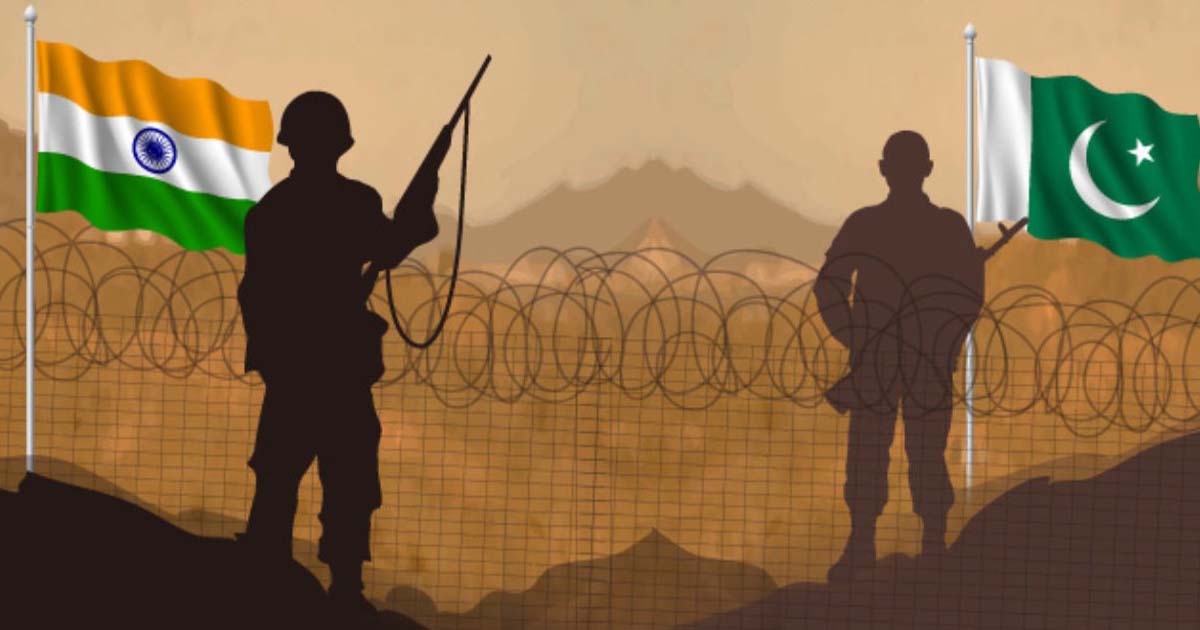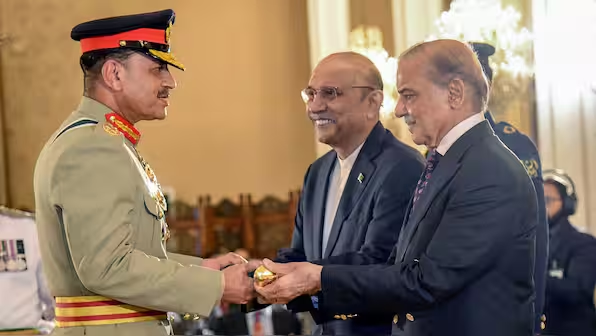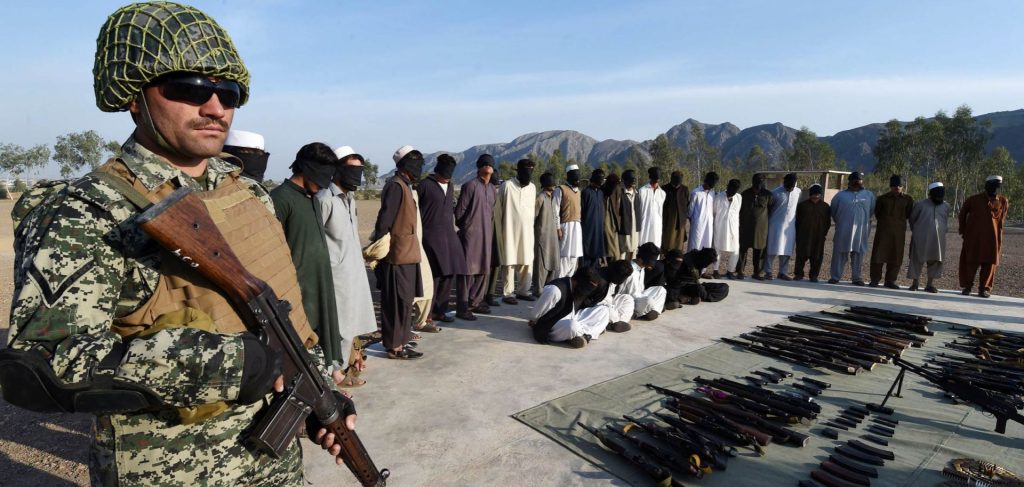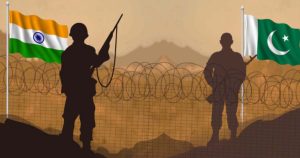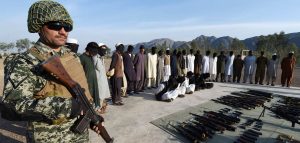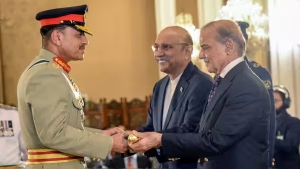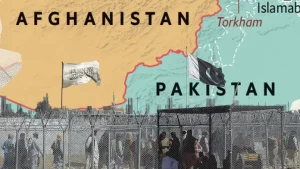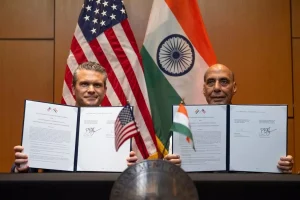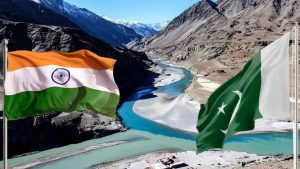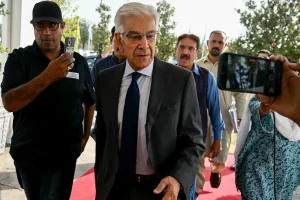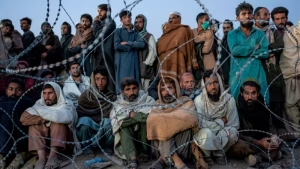Volume 2, Issue 10 — October 2025
Overview
In October, as many as 136 violent incidents were reported in Pakistan, resulting in 467 fatalities. Most of these incidents were reported in Khyber Pakhtunkhwa (KP) and Balochistan. The bulk of casualties were suffered by Pakistani security forces and members of peace committees. The fatality figure also includes militants of various terrorist networks killed in intelligence-based operations across Pakistan. Tensions between Afghanistan and Pakistan soared to an unprecedented level following Pakistani airstrikes against Tehreek-e-Taliban Pakistan (TTP) and the Hafiz Gul Bahadur (HGB)leaders and their hideouts in Afghanistan. The Taliban regime retaliated by targeting Pakistani border check posts across the entire stretch of the Afghanistan-Pakistan border. Though both sides negotiated in Doha and Istanbul, tensions have not subsided. Following a joint statement issued on October 31 in Istanbul, both sides will meet again on November 6 to find a workable solution to TTP’s challenge.
Pakistan’s operational counterterrorism intelligence and execution of precision strikes have improved substantially as witnessed in its ability to eliminate TTP’s Deputy Chief Qari Amjad alias Mufti Mazahim in Bajaur and neutralisation of several militant factions trying to cross into Pakistan from Afghanistan. The killing of Mufti Mazahim is second highest counterterrorism achievement of Pakistani security forces after eliminating the head of Jamaat-ul-Ahrar, Omar Khalid Khorasani, in 2022.
Afghanistan-Pakistan relations are unlikely to move back to the pre-Kabul airstrikes period, as the Pakistani military is resolved to continue imposing punitive costs on the Taliban regime for hosting and supporting the TTP. If the Taliban do not reconsider their stance on the TTP, tensions will persist in one form or another.
Trends
Suicide Bombings and Raids on Security Forces
On October 8, TTP militants attacked a security check post in Kurram’s Sada area, resulting in a heavy exchange of fire. Several militants surrounded the check post and killed at least 11 security personnel. This was one of the deadliest attacks by TTP on the security forces in Kurram, which has long been in the grip of sectarian tensions between Sunni and Shia tribes. The TTP has successfully exploited these sectarian faultlinesby aligning itself with Sunni tribes and making inroads into the volatile area.
Despite several agreements and negotiations between Sunni and Shia tribes, as well as the state’s resolve to de-weaponise the region and restore its writ by eliminating various checkpoints created by warring tribes, peace has not returned to Kurram. The security dynamics in Kurram lie at the intersection of sectarian tensions, tribal enmities, and land disputes dating back to pre-independence times, and external interference. Over the years, Sunni and Shia militant networks serving as proxies of external actors have infiltrated Kurram to not only recruit Sunni and Shia volunteers but also extend their ideological influence by pumping money into Kurram’s conflict dynamics.
On September 30, the TTP rammed avehicle packed with 350 kilograms of explosivesinto the paramilitary Frontier Corps’ (FC) headquarters in Quetta, sending shockwaves through the provincial capital. The blast was followed by intense gunfire between TTP militants and FC troops, leaving five people dead and around 20 others injured. At leastfive TTP militants tried to storm the FC headquarter but were neutralised at the main gate. While claiming responsibility for the attack, the TTP maintained that it was a reprisal for those killed in the military’s alleged drone attacks in Balochistan, KP, and the Newly Merged Districts (NMDs), especially in Khyber’s Tirah Valley, as well as for Baoch people allegedly abducted bysecurity institutions. The TTP also urged the victims of enforced disappearances in Balochistan and victims of drone strikes in KP to join its ranks to avenge their loved ones.
On October 10, Ittehad-ul-Mujahideen Pakistan (IMP), a militant alliance of HGBgroup, Lashkar-e-Islam and Harkat Inqilab Islami Pakistan (HIIP), attacked the Haider Kandao post in Khyber’s Tirah Valley, killing 11 security personnel. The attackers managed to escape unhurt. Following the attack, acurfew was imposed in the area, and gunship helicopters conducted aerial patrols to trace the perpetrators.
On October 11, militants attacked a police training school in Dera Ismail Khan district, killing seven policemen and wounding six others. The six militants were also killed in a gunfight that lasted over five hours. The attack was claimed by a little-known group, Tehreek-e-Tahafuz Islami Force (TIF), which identified Mufti Abu Khalid Usmani as its spokesperson. However, very little is known aboutTIF’s structure, ideological leanings, and goals. It is important to note that the TIF emerged shortly after Pakistan’s retaliatory airstrikes in Afghanistan. The group has declared open support for the Taliban regime and vowed to defend Afghanistan against Pakistani aggression. Apparently serving as a proxy retaliatory force of the TTP, the group emerged after the latter claimed it operates from inside Pakistan and has no presence in Afghanistan. The group has vowed to strike whenever Pakistan conducts cross-border operations in Afghanistan.
Bangladeshi Militants Fighting for TTP
In late September, TTP released a video tribute to a Bangladeshi militant, Saad alias Saifullah, who was killed by Pakistani security forces during a counterterrorism operation in Karak. The video is the first primary evidence of the presence of foreign fighters, especially Bengalis, in TTP’s ranks. It dispels the impression of TTP’s transnational linkages and ambitions beyond Pakistan. Furthermore, it reinforces the impression of TTP’s deep-rooted links with Al-Qaeda despite publicly disowning the latter. At any rate, Saad joined TTP in April 2024 along with other Bangladeshi militants. He was deployed on the frontline for the first time in Punjab’s Mianwalidistrict. His real name is Faisal Hussain Morol.He hails from a humble background in Bangladesh and ran a small shop. He reached Afghanistan via Dubai and joined TTP.
Propaganda Warfare
-
- ISKP’s Urdu Magazine Yalgharand Revival of Propaganda Operations
The Islamic State of Khorasan Province (ISKP) released the sixth issue of its Urdu-language propaganda magazine, Yalghar, covering multiple topics, such as acritique of the Pakistan Army’s alliance with the US and Syrian President Ahmed al-Shara, calling him a jihadist-turned-apostate, among others. The magazine also included articleson Baloch nationalism, the Taliban’s growing diplomatic ties with other countries, and the Pakistan-China friendship, while vowing to take revenge for Uyghur Muslims from the latter.
It bears mention that ISKP’s propaganda operations across various languages have slowed down in recent months, especially after its two important communication nodes, Al-Raud and I’lam Foundation, were taken down in June 2024. Although ISKP’s propaganda arm, Al-Azaim Media Foundation, has continued to regularly producematerials in Urdu and Pashto, these have largely consisted of translations and recirculated old content rather than original publications. The ISKP has suffered losses operationally, organisationally, and in the propaganda domain. However, it can potentially bounce back from these setbacks by leveraging its diverse supporter base, the decentralised and diversified nature of its structure, and resilience of its online community.
In another propaganda publication, the ISKP issued a 241-page booklet in response to the TTP’s critique against the group. Spanning several chapters, the booklet targeted the TTP’s Shura and rebutted the latter’s accusations and ideological positions. The ISKP also urged TTP fighters to leave the group and join its ranks. The document highlights deepening ideological rift between the TTP and the ISKP. This rivalry should be viewed against the backdrop of sharp animosity between the ISKP and the Taliban. In a competitive and multi-actor threat landscape, such ideological rivalries are aimed at outdoing each other while seeking to win sympathies of militant fighters to boost operational and organisational strength.
Separately, in a 12-minute video circulated on different social media platforms on October 13, the ISKP criticised the Taliban’s Foreign Minister Ameer Khan Muttaqi’s first official visit to India. The propagandaaimsto undermine the Taliban’s ideological legitimacy and recruit disgruntled Taliban elements.
Harakat Inqilab Islami Pakistan’s Website and Digital App
On October 6, the newly formed militant group Harakat Inqilab Islami Pakistan (HIIP), which is also part of three-group coalition named IMP, launched its digital app and website to strengthen its digital presence and convey its message in a more coordinated manner. The HIIP comprises various Al-Qaeda members who are continuing their warfare by embedding themselves with various jihadist networks in Pakistan. Their inclusion in local Pakistani jihadist groups have improved the latter’s propaganda capabilities. The HIIP’s step to create its own website and a digital app is one manifestation of this.
Propaganda warfare has become a corner stone of Pakistani militant factions’ asymmetric operations to legitimise their violence, recruit vulnerable individuals, gather funds, and propagate their ideological messaging. The decentralised nature of social media and the rapid speed of instant messaging havegiven them an edge over the state in manipulating, and at times dominating, the digital space in the domain of narrative warfare.
TTP Trying to Exploit the State-Society Gap
The TTP has been trying to further its ideological appeal and extremist influence in society by manipulating socio-political and sectarian faultlines. Two statements issued in October, one on protests in Kashmir and the other on military’s efforts to organise local anti-Taliban militias in the NMDs, exemplify this.
On October 4, addressing local communities in Swat, the TTP warned locals against forming “peace committees,” claiming it was an effort to pit them against the group and create divisions among Pashtuns. The TTP maintained that violence in KP was due to ‘oppressive policies’ of Pakistani security institutions. In doing so, the TTP portrayed its militants as sons of the soil and self-appointed guardians of Pashtun nation’s interests, honour, and culture. At the same time, the TTP also urged locals to join its ranks and fight against the Pakistani state.
Another statement issued the same daycondemned the Pakistani state’s crackdown on protesters in Azad Jammu and Kashmir and expressed solidarity with the Kashmiri people. It highlighted incidents of firing, teargassing and batoncharging against protesters,resulting in deaths and injuries. It accused Islamabad of exploiting Azad Kashmir’s resources without giving due rights to locals. The terror group also urged unity among people to oppose the state.
Such opportunistic statements reflect TTP’s strategy of expressing solidarity with different communities at odds with the state to portray the state as an “oppressor” and win their sympathies for its ideological and strategic interests.
Militant Networks Sympathising with Tehreek-e-Labbaik Pakistan (TLP)
In October, various militant networks also expressed sympathy with Tehreek-e-Labbaik Pakistan (TLP) and condemned the state’s heavy-handed crackdown against it. These messages portrayed the TLP as a peaceful religious group protesting to show solidarity with people in Gaza, while characterising Pakistani security institutions as ‘oppressors’ and ‘pro-Israel.’ Groups that expressed solidarity with the TLP include, the TTP, the HIIP and the Taliban regime. Such propaganda from ideologically aligned Deobandi militant networks serves a two-pronged purpose:on the one hand, it villainises the Pakistani state and paints it as pro-West;on the other, this Deobandi conglomerate of militant networks seeks to increase its influence among Barelvi segments of the Pakistani society, which constitutes the country’s largestshareof ideological adherents.
Response
On October 3, Pakistani security forced eliminated a key TTP commander, Tor Dal alias Gohar, in Bajaur district. He had a bounty of Rs 10 million on his head. Likewise, on October 29, Pakistani security forces eliminated the TTP’s Deputy Chief Mufti Muzahim following circulation of a video showing his presence in Bajaur district, released to dispel the impression of the terror group’s presence in Afghanistan. The video provided important clues about his whereabouts to investigating agencies,enabling them to trace him. His killing is a major setback for the TTP and a notable success of Pakistan security institutions. While Pakistan is engaged in talks with the Taliban delegation in Turkiye, the killing of Mazahim by Pakistan security forces is a clear signal to the Taliban regime that the TTP will be pursued and eliminated at all costs.
In recent months, Pakistani security institutions have improved their operational intelligence and decapitated several key TTP commanders in different areas of Pakistan. While the TTP has managed to recover from mid-tier leadership losses, it has faced a continuous pressure from Pakistan’s precision strikes and intelligence-based operations. However, the TTP’s sanctuaries in Afghanistan, where the top leadership enjoys Taliban’s safety umbrella, has insulated it from implosion. Pakistan will have to combine its improved operational counterterrorism performance with adroit diplomacy, bettergovernance, and stronger relations with local populations in the Afghanistan-Pakistan borderland to sustain the momentum and success of its operations against the TTP.
In response to rising terrorist attacks in Pakistan emanating from Afghanistan, Pakistani jets carried out several airstrikes in Afghanistan, including Kabul, in October. The airstrikestargetedthe TTP leaders and their hideouts. The airstrikes in Kabul targeted the vehicle of the TTP chief Nur Wali Mehsud, who escaped unhurt. After repeated negotiations to resolve the TTP’s challenge and multiple warnings of kinetic action, Pakistan’s patience wore thin with the Taliban regime, leading it to impose punitive costs for the latter’s refusal to act against the TTP. As a result, Pakistan-Afghanistan tensions rose to an all-time high, resulting in two rounds of negotiations in Doha and Istanbul.
On October 31, both sides issued a three-point statement agreeing to continue the ceasefire reached in Doha, meet again in Istanbul on November 6 to discuss implementation modalities, and institute a monitoring and evaluation mechanism to ensure maintenance of peace and penalise the violators. In the November 6 meeting, both sides will try to find a workable solution to the TTP’s challenge, among other issues. While the Taliban want Pakistan to directly negotiate with the TTP, Pakistan has urged the Taliban to act against the TTP and handover its leaders. Pakistan has threatened open war against Afghanistan, and tensions are likely to rise further if Pakistani demands are not met.
During border tensions, all crossing points of the Afghanistan-Pakistan border remain closed, disrupting trade. Regardless of the outcomes of ongoing talks, tensions are likely to persist if the Taliban do not act against the TTP. Pakistan will continue to raise costs for the Taliban regime for hosting and supporting the TTP. Some observers have noted that there was a notable dip, exceptions notwithstanding, in terrorist attacks in Pakistan following the Doha talks, suggesting that the Taliban’s cooperation against the TTP can help createa peaceful security atmosphere.
On October 23, the Counter Terrorism Department in Karachi arrested a key commander of the Iran-backed Zainabiyoun Brigade who was involved in sectarian killings in the port city. He was also the mastermind behind several sectarian attacks in Karachi. He had been receiving financial assistance from his accomplices in Iran. In the context of recent developments in the Middle East, the Zainabiyoun Brigade’s activities in Pakistan are concerning and could be a precursor to future sectarian tensions.
On October 25, Pakistani security forces foiled a cross-border militant movement near the border with North Waziristan and killed 16 militants, including three suicide bombers, after surrounding them. During this operation, one suicide bomber detonated his vest and killed one security personnel. The slain militants included Afghan nationals, indicating the inclusion of foreign nationals within the TTP’s ranks. Another group of ten militants was intercepted and eliminated in Gakhi area of Kurram when they were trying to cross into Pakistan. In recent months, Pakistani security forces’ ability to detect and eliminates tashkeels (small groups of militants) attempting to cross into Pakistan from Afghanistan has improved substantially inflicting heavy life losses to Afghanistan-based Pakistani terrorist networks.
Outlook
Violence is likely to persist and could result in retaliatory attacks by the TTP and Hafiz Gul Bahadur factions to avenge Pakistani airstrikes in Afghanistan. Even if Afghanistan and Pakistan reach an agreement in Istanbul, a durable solution of security challenges is unlikely to emerge given deep-rooted ideological and ethnic ties between the Taliban and the TTP. In the coming days, the TTP and other militant factions are expected to launch attacks under new nomenclatures to obscure their presence in Afghanistan while continuing to defend the Taliban’s interests against Pakistani incursions.

